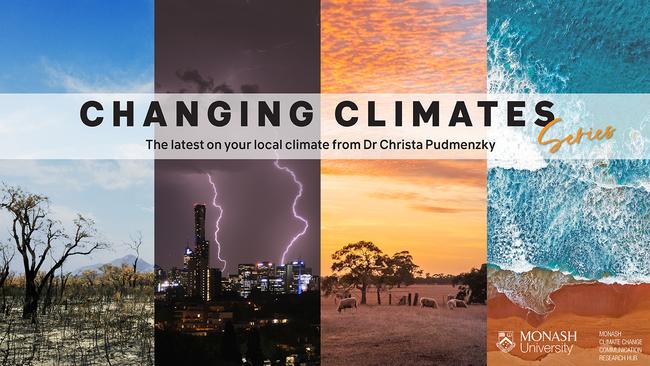Time to get on board with trams and light rail
Host of Changing Climates series, Dr Christa Pudmenzky, explains how Gladstone's climate is warming. Plus, how trams and light rail help reduce emissions and increase accessibility.

Hyperlocal
Don't miss out on the headlines from Hyperlocal. Followed categories will be added to My News.
On average, Aussies travel around 12,000km by car each year – the same as road tripping from Brisbane to Melbourne seven times.
Unfortunately, emissions from our petrol guzzling cars act like a blanket wrapped around the earth, and trap heat in our atmosphere.
Over time, this can lead to dangerous levels of warming and changes to our climate.
We're seeing evidence of this in Gladstone where the average February day is now 1.8C warmer than it was in the early 1970s.

And, unless emissions are reduced, it's likely Gladstone will experience increasingly warmer conditions.
A simple way to reduce our personal fossil fuel emissions is by making the move to more sustainable modes of transport like trams and light rail.
Shifting gear towards public transport
Aussies have been getting on board with trams and light rail since the late 1800s.
Originally hauled along by horses, these now electrically-powered, high-speed vehicles are transforming the way we travel and helping reduce our transport emissions.
But what exactly is the difference between trams and light rail?
While trams share the road with cars and are an iconic feature of cities like Melbourne, light rail networks have the added benefit of reducing congestion by operating 'off-the-road' in dedicated corridors.
Studies have found people are far less likely to use public transport if they have to walk more than 800m to a stop.
For this reason, trams and light rail help fill the gap between other methods of public transport like trains and buses.
They create flexibility by stopping frequently, while also moving at high speed.

Across Australia, light rail and tram systems now exist in Adelaide, Melbourne, Sydney, Canberra, Perth, the Gold Coast and are currently being developed in Brisbane.
They have become increasingly popular and demand is only set to rise as our population grows, with forecasts expecting an 89 per cent increase in public transport use over the 2011 to 2031 period.
On the right track to reducing emissions
Trams and light rail help keep our planet healthy by reducing our carbon footprint.
They can carry around five times as many people as a bus, and up to 60 times as many people as a car, resulting in lower per-passenger-emissions.
Additionally, being powered by electricity means they can capitalise on Australia's abundant renewable energy resources like solar and wind.
For example, Melbourne's tram network receives its electricity from large-scale solar plants in northern Victoria, while Canberra's light rail vehicles are powered by 100 per cent renewable energy.
Modern light rail systems also allow shrubs and grasses to be planted amongst and beside the tracks.
This helps filter water, foster biodiversity, and keep our cities cool through urban greening.
And, at the end of their lifetime, tram and light rail infrastructure can be reused or recycled, creating a sustainable cycle of valuable materials.
We're seeing this in Sydney and Adelaide, where all light rail vehicles are 98 per cent recyclable.
Alongside keeping our environment on the right track, trams and light rail can help connect our communities and boost the economy.
By linking our outer suburbs and regional areas with our cities, we can support liveability and limit emissions from highly car-dependent regions.
Building this infrastructure can also spark investment in businesses, housing, and public spaces along the transport corridor.
This brings new life to unused spaces, creating areas where people want to work, live and play.
Ultimately, trams and light rail, in tandem with other low emissions transport, support our modern sustainable lifestyles, and can help us shift gears towards a clean, green future.

Want more information on how your climate is changing? Check out the last article in this series.
Dr Christa Pudmenzky is a climate scientist at the University of Southern Queensland.
This column is part of a collaboration between Monash University and News Corp to deliver hyperlocal weather and climate information.

